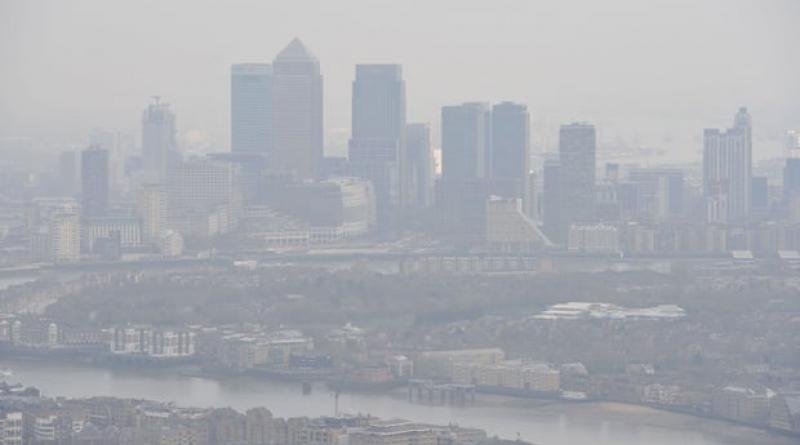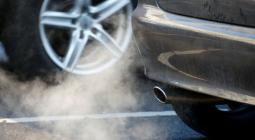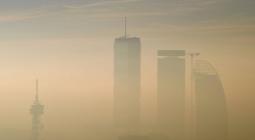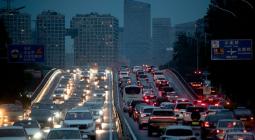‘Compelling’ evidence air pollution worsens coronavirus – study.

Exclusive: best analysis to date indicates significant increases in infections, hospital admissions and deaths.
There is “compelling” evidence that air pollution significantly increases coronavirus infections, hospital admissions and deaths, according to the most detailed and comprehensive analysis to date.
The research indicates that a small, single-unit increase in people’s long-term exposure to pollution particles raises infections and admissions by about 10% and deaths by 15%. The study took into account more than 20 other factors, including average population density, age, household size, occupation and obesity.
There is growing evidence from Europe, the US and China that dirty air makes the impact of Covid-19 worse. But the study of the outbreak in the Netherlands is unique because the worst air pollution there is not in cities but in some rural areas, due to intensive livestock farming.
This allows the “big city effect” to be ruled out, which is the idea that high air pollution simply coincides with urban populations whose density and deprivation may make them more susceptible to the virus.
The scientists are clear they have not proven a causal link between air pollution and worse coronavirus impacts. Conclusive evidence will only come with large amounts of data on individual people, which is not yet available, rather than average data for regions as used in the analysis.
But scientists said it was important to do the best research possible as understanding the link may be important in dealing with further Covid-19 outbreaks and could signal where subsequent waves will hit the hardest.
Many scientists agree that air pollution is likely to be increasing the number and severity of Covid-19 infections, as dirty air is already known to inflame the lungs and cause respiratory and heart disease that make people more vulnerable. But not all agree that the evidence so far is good enough to demonstrate a large impact.
“What I was struck by was this really was a strong relationship,” said Prof Matthew Cole, who conducted the research with his colleagues Ceren Ozgen and Eric Strobl at the University of Birmingham, UK. Unlike most studies to date, the paper has been reviewed by independent scientists and accepted for publication in a journal, Environmental and Resource Economics.
The team concluded: “Using detailed data we find compelling evidence of a positive relationship between air pollution, and particularly [fine particle] concentrations, and Covid-19 cases, hospital admissions and deaths. This relationship persists even after controlling for a wide range of explanatory [factors].”
The most prominent previous study was conducted by Harvard University researchers and found an 8% increase in coronavirus deaths for a single-unit rise in fine particle pollution. Cole said: “We used data at much finer resolution, with the average size of the 355 Dutch municipalities being 95 km2 compared to the 3,130 km2 for a US county.”
“This means we can more precisely capture each region’s characteristics, including pollution exposure,” he said. The new analysis also uses Covid-19 data up to 5 June 2020, allowing it to capture almost the full wave of the epidemic.
An additional factor considered was the Netherlands carnival gatherings that take place in late February, particularly in the livestock farming regions in the south and east of the country. This is where coronavirus cases were highest and where air pollution is highest, due to the ammonia emitted from livestock farms, which forms particle pollution. Coles’ team used statistical methods to estimate the impact of these gatherings. “But it did not knock out the effects of pollution, which I really thought it would,” he said.
Among the other factors taken into account were average income, level of education, smoking, share of population receiving incapacity benefits and closeness to international borders.
“As analyses of a possible link between air pollution and Covid-19 progress we are beginning to see much better studies emerge,” said Prof Frank Kelly, at Imperial College London, UK. “This new study appears to be the best to date.”
He said the work used high quality data and controlled for multiple possible confounding issues. “Further research elsewhere is required to confirm these findings, but we have now reached a point in the pandemic where datasets are robust enough to ask the question,” he said.
Prof Francesca Dominici, who led the Harvard Study, praised the work as “very good” and agreed that it added to her team’s work. She said it was important to examine the relationship between air pollution and Covid-19 outcomes across many countries, as each country’s data would have its own strengths and weaknesses and different confounding factors can be at play.
“Air pollution is not yet getting enough attention because of the slow peer-review process [for academic studies]” Dominici said. “But hopefully as this and other studies are published, the topic will get more attention and most importantly will affect policy.”
However, Prof Mark Goldberg, at McGill University in Canada, warned that averaging data across a region masked the variations among individuals and could mask other potential explanations for the correlation between dirty air and coronavirus. He is concerned that over-interpreting the correlation distracts from other important factors.
“The issue with severe cases is social and economic deprivation – which correlates with air pollution – and [underlying health] conditions,” he said. “I see it in Montreal: the poorest areas with high numbers of people living together, on low incomes and working multiple jobs were hardest hit.”
Cole accepts that only individual-level data will conclusively resolve the question of a link. “We can’t rule out [some unknown factor] until the data gets better. But it’s difficult to know what that would be.”
13 July 2020
The Guardian





